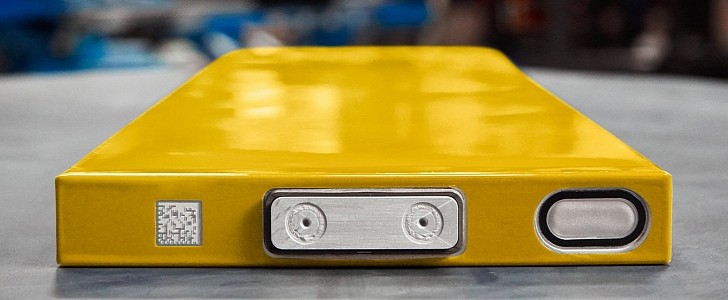After Mujeeb Ijaz said that “we should be worried about the foundation of NCM/NCA,” his company started clarifying what he really meant. The Our Next Energy (ONE) founder later disclosed that its Gemini architecture would be hybrid, with LFP cells and NMC cells with more manganese. This is not the only difference they have compared to normal NMC cells: they are also anode-free and have an energy density of 1,007 Wh/l.
If you have no idea what that energy density means, it is almost twice as much as regular NMC batteries present nowadays, with around 580 Wh/l. Being anode-free usually means that the cells work with lithium metal. In other words, the lithium-ions cross the separator and turn into a lithium layer that plays the role of the anode. When the battery is charged, this lithium goes back to the cathode. ONE did not confirm if that was the case.
What the battery startup was willing to share is that its proprietary DC-to-DC converter is a critical element of the Gemini architecture. In regular EVs, it makes the bridge between the high-voltage (HV) system and the 12V battery. If you want to make that even simpler, it is to electric cars what alternators are to combustion-engined vehicles. ONE suggests it is more than that in the Gemini architecture.
According to the battery startup, anode-free batteries usually don’t last long, which makes them unsuitable for automotive use. That’s because lithium metal batteries have a massive problem with dendrites. QuantumScape said it solved that with its ceramic separator. SES claims to have achieved the same with a proprietary high concentration solvent-in-salt electrolyte that is self-extinguishing in thermal runways and a protecting polymer coating on the lithium metal anode.
ONE apparently did not develop any of these solutions. Its solution was “reducing cycle and peak power requirements by 90%.” The DC-to-DC converter “pairs more standardized LFP and anode-free chemistries into one battery pack.” How it does that is still a mystery, and we can only speculate about the architecture. Do the LFP and anode-free modules work at different voltages? Do they have independent connections to the converter?
For now, ONE just revealed the energy density of these new cells and that they are 240A prismatic units that will be installed in a BMW iX by the end of the year. Considering the Gemini architecture will only reach production volume in 2026, we seriously doubt that ONE will spill the beans when the concept SUV is presented: we shall have to wait a few more years to fully understand the idea.
What the battery startup was willing to share is that its proprietary DC-to-DC converter is a critical element of the Gemini architecture. In regular EVs, it makes the bridge between the high-voltage (HV) system and the 12V battery. If you want to make that even simpler, it is to electric cars what alternators are to combustion-engined vehicles. ONE suggests it is more than that in the Gemini architecture.
According to the battery startup, anode-free batteries usually don’t last long, which makes them unsuitable for automotive use. That’s because lithium metal batteries have a massive problem with dendrites. QuantumScape said it solved that with its ceramic separator. SES claims to have achieved the same with a proprietary high concentration solvent-in-salt electrolyte that is self-extinguishing in thermal runways and a protecting polymer coating on the lithium metal anode.
ONE apparently did not develop any of these solutions. Its solution was “reducing cycle and peak power requirements by 90%.” The DC-to-DC converter “pairs more standardized LFP and anode-free chemistries into one battery pack.” How it does that is still a mystery, and we can only speculate about the architecture. Do the LFP and anode-free modules work at different voltages? Do they have independent connections to the converter?
For now, ONE just revealed the energy density of these new cells and that they are 240A prismatic units that will be installed in a BMW iX by the end of the year. Considering the Gemini architecture will only reach production volume in 2026, we seriously doubt that ONE will spill the beans when the concept SUV is presented: we shall have to wait a few more years to fully understand the idea.






